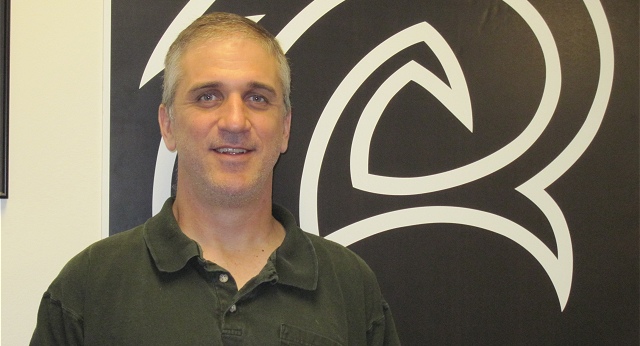
Above: Runic Games CEO Max Schaefer
It is the highly anticipated sequel to a million-selling action role-playing game, brimming with monsters and loot – and we’re not talking about Diablo III. Seattle-based Runic Games has been working on a follow-up to its 2009 surprise hit Torchlight, which neatly captured the essence of Diablo’s addictive gameplay.
The familiarity is not accidental as Runic was co-founded in 2008 by brothers Max and Eric Schaefer, who had set up a game development studio named Condor in 1993. Condor ended up becoming the birthplace of the first two Diablo games and was rechristened Blizzard North.
We sat down with Runic Games co-founder and CEO Max Schaefer at the company’s Seattle studio for an exclusive interview. Schaefer spoke to us about the state of Torchlight II, business models, the inevitable Diablo comparisons, and lessons learned from his failed startup Flagship Studios.
Runic Games has established itself in a game genre that is characterized by fast-paced gameplay and frenzied mouse clicking. Players battle large hordes of monsters to collect the loot and the experience points required to upgrade their character’s skills and equipment.
Action role-playing games offer a lighter, less time-consuming alternative to epic story-driven RPGs (such as The Elder Scrolls: Skyrim) and massively multiplayer RPGs (Star Wars: The Old Republic). The consumer interest isn’t light at all: Diablo III became a staple of “most anticipated games of 2012” lists and even a newcomer like Torchlight managed to sell over a million copies.
Torchlight II differentiates itself from Diablo III with a modest $20 sticker price and an openness for user-created modifications. Runic Games announced that TorchEd, a toolset to add and modify game content, will be made available free of charge. Blizzard’s Diablo III, on the other hand, will not allow modifications because user-generated items could ruin the economy of its auction house system where in-game items can be traded for real-world currency.
Runic Games has not announced a release date for Torchlight II yet, but a multiplayer beta test is supposed to start soon. Here’s an abridged transcript of our interview with Runic CEO Max Schaefer.
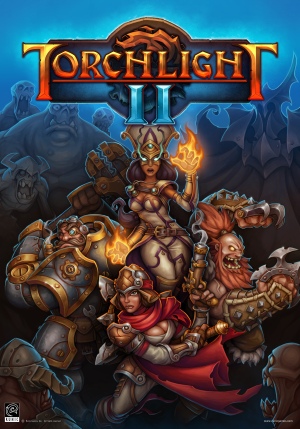 Games Beat: How is Torchlight II coming along?
Games Beat: How is Torchlight II coming along?
Max Schaefer: We’re in that long and tedious finishing portion of the game. You know, they say the last 5 percent of the game takes 40 percent of the time, and it’s definitely true. Especially with a game with as many moving parts as Torchlight II. It’s just an amazing amount of content, and a lot of things that have to be tuned just right.
GB: Do you have a target release date?
MS: We really want to it to be soon, rather than the middle of the year. But we don’t want to be pressured by a date because the release really should be based on when we’re happy with the game and not because we made a commitment to a date.
GB: So you’re not trying to come out before Diablo III at any cost?
MS: Well, we don’t want to come out the same week (laughs). But first of all, we don’t know when Diablo III is coming out. I remember when we started our company three years ago now and were making Torchlight I, the main concern from our publishers was “What about Diablo III?”. And you know, here we are still living with that and I think that it’s our lot in life to live in fear of the Diablo III release date. Our defense against that is to make sure that our game stands on its own merits and is a competitive, compelling game – no matter whether it comes out before, after, or during Diablo III’s release.
GB: You created the first Torchlight game in under one year, right after Flagship Studios shut down?
MS: It was eleven months from literally blank computers with no software on them whatsoever to a finished, shipping product. Everything was gone after Flagship imploded, all the computers and desks, so we were genuinely starting out from scratch again because that was all liquidated in the closing of Flagship.
Now, we did get one break: we talked to the liquidator and were able to buy all our stuff back — at a very good price (laughs). But obviously the hard drives were wiped and there was no code, nothing. But the whole group had worked together previously, we knew our method of working and were able to get up and running pretty quickly.
GB: You and your brother Erich had co-founded Condor, the studio that eventually became Blizzard North. Does the Blizzard pedigree help to draw attention to a new action RPG?
MS: Oh sure, that definitely helps, but I have to give credit to [Runic Games co-founder and Torchlight II development lead] Travis Baldree, because he is the one other guy besides the Blizzard pedigree people who really understands and gets the genre. Another reason why it was an easy decision for us to start up here is that it’s a group that now is as qualified to make an action RPG as Blizzard is.
GB: Chinese game publisher Perfect World purchased a majority stake in Runic Games for $8.4 million. Why did you pick that partner?
MS: We weren’t sure exactly what form the company was going to take when we started up again, so my brother and I self-funded for the first few months while we went out and searched for who would be our best partner.
At the time our notion was to build an MMO and, in evaluating partners, who would help us make an MMO, because we’re a small company and we couldn’t run an MMO out of this office. We needed a partner who could help us with the infrastructure, operations, customer support, billing and all that. It seemed that Perfect World is the best alignment for us because of the MMOs they run in China, the numbers that they deal with are incredible. They really understand how to run these games efficiently and they have a lot of expertise in itemization. For MMOs we believe in the free-to-play item sales model over the subscription model, and it just felt like it was the best mix for us.
They also wanted us to operate pretty much autonomously and we were able to strike a really good deal. Even though we haven’t made an MMO yet, they’ve been very supportive of us. Since Torchlight has been a success and we’re making money as a company, they’re very happy with that.
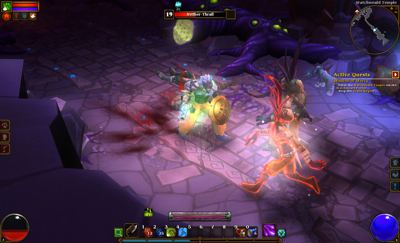 GB: So Runic Games as a business unit is profitable?
GB: So Runic Games as a business unit is profitable?
MS: Yes, absolutely. We’ve sold 1.1 or 1.2 million copies of Torchlight I. And we don’t spend a lot. Part of our business model here is that we run a very lean efficient operation. We have a total of 31 employees.
GB: What has the average sales price for Torchlight I been? It started out at $20, but you’ve priced it more aggressively during several Steam sales.
MS: The sales are incredible on Steam, even to this day. We just had a holiday sale that was 20 months after the release of Torchlight and we probably had 25,000 – 30,000 units on a weekend. Average sale price I’m not sure, but it’s probably hovering around 10, 12 dollars.
GB: Perfect World has a majority stake, but doesn’t own Runic Games outright?
MS: No, they own a majority stake, but we have local board control of the company. We can make any decisions we want as far as what the company does and all that. Obviously we’re not just going rogue. We talk to Perfect World all the time and we have a very good relationship with them.
GB: Have you considered expanding Runic Games in order to work on more than one project at a time?
MS: We’ve talked about it and right now we definitely want to keep this core team small. Because if it gets any bigger, then Travis and my brother and myself are doing more management than game making, and that’s really not where we’re best, not what we’d liked to do. If Travis isn’t neck deep in code and tinkering with every little detail than he’s not happy and we’re not getting as good a product.
Whether we expand in the future in other directions is up in the air, but we definitely want to keep the core small, quality-development team that we have here going. Because it’s an environment that we like and it’s a size that we like. It’s more fun to make games with a small team. Looking back when we made Diablo at Blizzard, it was a small team like this. When we made Diablo II, I think it was up to maybe 45 team members when we shipped that game. And that was getting too big. I know other people do things differently, there’s a lot of successful ways to make games, but this is the way that suits our team.
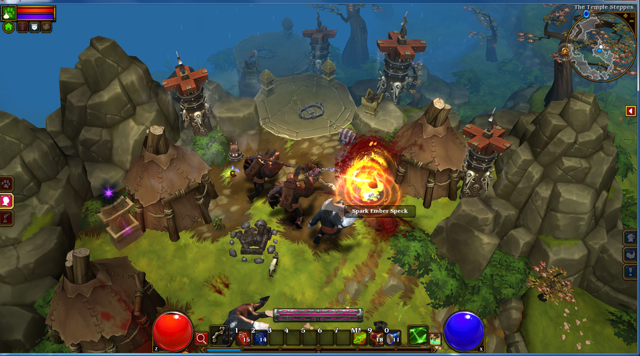
GB: How similar does the end stretch with Torchlight II feel compared to the development of Diablo II?
MS: It does feel similar. In fact, when Flagship went down, part of our decision- making was to step back and go back to what we do well, and what had succeeded for us in the past, and build from that. We did not set out to make a Torchlight I and then a Torchlight II that sort of mirrored a Diablo I and II, it just was the natural progression for the game.
GB: What were the key lessons you learned from the failure of Flagship Studios?
MS: Boy, there’s so many (laughs). I think we made the mistake at Flagship of trying to do too many things and please too many people. The biggest lesson coming out of that was to focus on what you do well, have a very distinct specific idea and pursue it instead of trying to please everybody on the planet.
At Flagship with Hellgate London we had a free-to-play model, we had a subscription model… it was definitely a situation where we were trying to do too many things, too many models wedged into one game. It was a project that required a lot more time and assets than we were able to give it.
Another mistake we made was to have multiple partners for the game, so we had an US and Europe partner and an Asian partner. They had different interests and they also had their own financial issues that were going on, and we had to release the game too early. It needed another 9 months basically of polish and bug fixing and all that sort of stuff.
But we didn’t have the partners to deal with it and didn’t have the money internally to deal with it, and we were too stubborn to simplify our design and simplify our goals. Even though things were crumbling around us we just tried to forge ahead and do it, come hell or high water, and it blew up on us.
Coming out of Blizzard you get this sense that if you just work really hard it all comes together and works in the end, and it’s definitely not true. So we learned a lot of lessons from that and were determined to not repeat those. And that’s why we want to keep a small team that has a burn rate that’s rational. You can see our office is not extravagantly decorated in any sense…
GB: Well, I noticed that leftover Christmas tree…
MS: Yeah, we spent $50 for holiday decorations. So we just want to make sure that we have a viable and profitable business this time around. And have more fun as well, while we’re doing it.
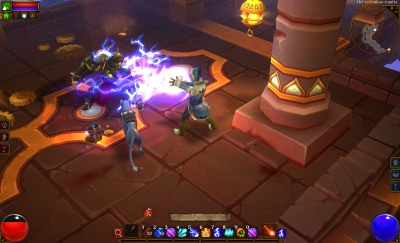 GB: Why do you stick with a $20 price for Torchlight II, even though it’s bigger and has more features than the first one, like co-op multiplayer?
GB: Why do you stick with a $20 price for Torchlight II, even though it’s bigger and has more features than the first one, like co-op multiplayer?
MS: We felt like Torchlight I’s price point was a magic price point for that kind of game and we sold more than we anticipated. So there’s a market for a $20 AAA game. Our idea was: let’s just make games that feel like an AAA game and play like an AAA game, but strip away all the extraneous stuff and the expensive marketing campaigns and all that. Just offer the game for a $20 price point and then we think people will flock to that. They did it for Torchlight I and Torchlight II is so much bigger and so much better that I can’t imagine that people will be disappointed when they pay 20 bucks for it. And what we want most of all are happy customers that tell their friends about the game.
GB: Are you considering additional revenue sources, like virtual item sales?
MS: No, I think we want to keep it a simple business model and not split our communities into people who buy extras and people who don’t buy extras. So if we do anything with Torchlight II [past its release], it would be – most likely – an expansion pack. We’d put together another package of stuff and sell that, but not try to nickel and dime with single items or anything like that. Torchlight is something that doesn’t lend itself well to item sales anyway because we give you the development tools with the game, so you can just make any item you want anyway. Selling something to players that they can generate themselves would be tough.
GB: You’re talking about the TorchEd editor that you’re planning to offer as a free download. Why are you offering your creation tools to the community?
MS: We think the development tools are important to be sent out because that’s something that no one else is really doing in this area. People who play action RPGs always think they have better ideas about how it should have been, and they can make that happen then at home, with the development tools. So we decided to go that way instead of making a hyper-secure environment where we can sell items and give certain people advantages. And obviously that’s an economically viable way to do things, because people are making a lot of money with that, but that’s not what we do.
GB: Any ongoing bets on what Runic’s next project is going to be?
MS: Well, there’s 31 people here and we’ve got 31 ideas on what we should do next. We’re working on some ideas and honing them, but what we really want to do is release Torchlight II first. I’m sure we’ll have to do a patch or two, we’ll do a Mac port… and then we can sit back and see what the world looks like. Did the game blow up like crazy? Maybe we want to really consider doing an expansion pack then. Or are people done with this sort of game and we’ve got to move on? Then we’ll move on to something different. We’ll also consider what we want as game makers to feel creatively satisfied and we’ll come up with a decision. Right now it’s really up in the air.
GB: That action RPG MMO idea is still floating around?
MS: Absolutely. The thing about an MMO is that it’s a really serious long-term commitment because you have to grow the community and service it indefinitely. So we have to make sure that that’s what we want to commit to, because it would probably be the last thing we do for a long time… I’m not getting any younger either (laughs).
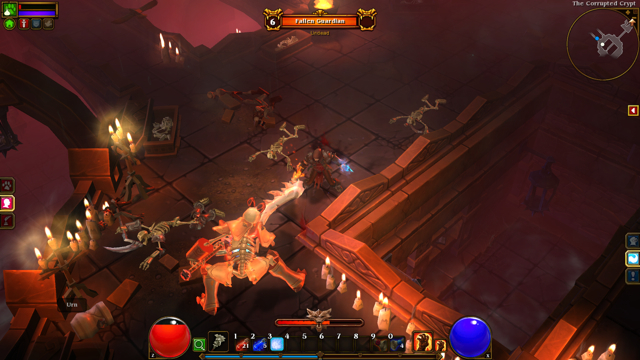
VentureBeat's mission is to be a digital town square for technical decision-makers to gain knowledge about transformative enterprise technology and transact. Learn More
